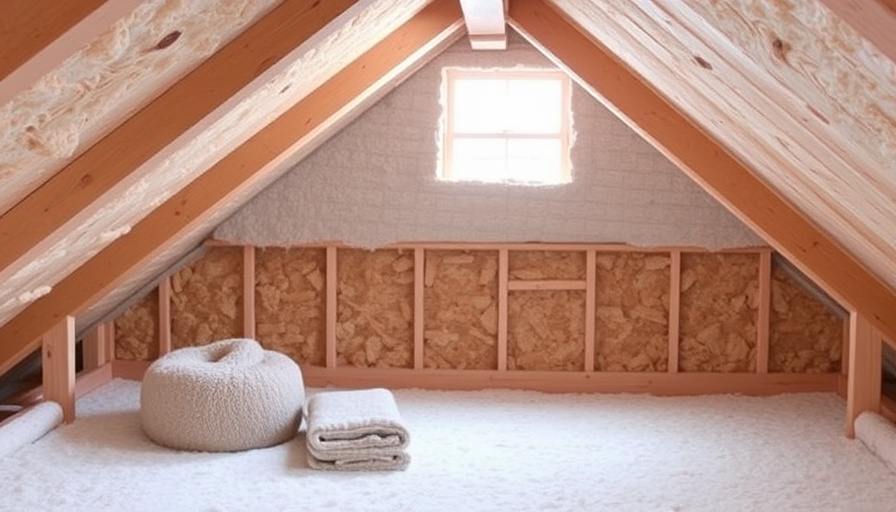
Knee Walls: The Overlooked Insulation Challenge
For many homeowners, knee walls can be a frustrating aspect of attic design. These walls, typically found in homes with sloped ceilings, can significantly impact energy efficiency. If you have knee walls, you likely know firsthand the seasonal discomforts they bring: sweltering heat in summer and bone-chilling cold in winter. Understanding how to properly insulate and ventilate these spaces not only enhances comfort but also optimizes your home's energy efficiency.
Understanding the Importance of Air Sealing
Air leakage is the enemy when it comes to maintaining a comfortable home. Research indicates that knee walls can account for a staggering percentage of air leakage in many houses. A fundamental step in insulating knee walls is ensuring adequate air sealing in the junctions where the knee wall meets the floor joists. This is crucial because any gaps in this area can facilitate unwanted temperature transfer. An effective approach is to use spray foam or fireblock foam insulation around the edges, which helps create a tight seal, preventing heat from escaping or entering.
Choosing the Right Insulation Material
When it comes to insulating knee walls, three primary materials are commonly recommended: fiberglass batts, cellulose, and spray foam. Each has its pros and cons:
- Fiberglass Batts: A popular choice, but they must be installed without gaps to be effective. They provide decent insulation value, but they do not create an air barrier.
- Cellulose: Excellent for filling spaces and can be blown into knee walls, but like fiberglass, it requires proper application to work effectively.
- Spray Foam: Offers the best performance. It not only provides insulation value but also acts as a comprehensive air barrier. This can prevent issues like ice dam formation on roofs by eliminating cold spots.
Ventilation: Ensuring Healthy Air Flow
Another essential aspect of insulating knee walls is ventilation. Poor air circulation can lead to excess moisture accumulation, increasing the risk of mold and structural damage. Proper ventilation strategies involve installing soffit vents and ridge vents that work in harmony, promoting efficient air flow. Maintaining a balance between insulation and ventilation is crucial, especially in older homes where structures may not have adequate built-in ventilation options.
Practical Tips for DIY Enthusiasts
If you're considering tackling this project yourself, here are some practical tips:
- Start by checking for any air leaks before undertaking insulation—this is a critical step that can make a substantial difference in efficiency.
- Follow the Department of Energy's recommendations on insulation R-values. Generally, an R-value of R-49 to R-60 is suggested for attics.
- Consider using reflective insulation, especially in warmer climates, to help manage heat gain during the summer.
Final Thoughts
By focusing on effective insulation and ventilation of knee walls, you can transform these challenging spaces into more energy-efficient parts of your home. Not only will this initiative enhance your comfort, but it can also reduce your heating and cooling bills significantly. Ready to make a change? Invest in your home’s efficiency and comfort by addressing those knee walls today.
 Add Row
Add Row  Add
Add 




Write A Comment